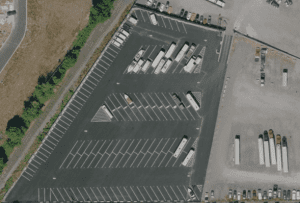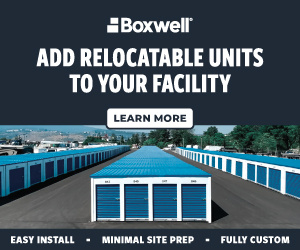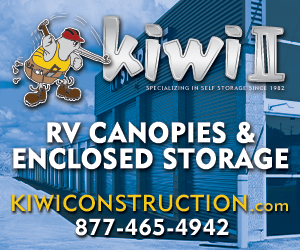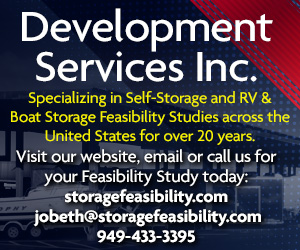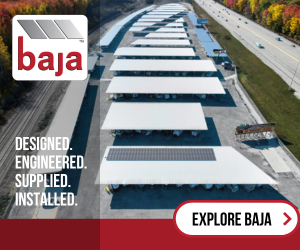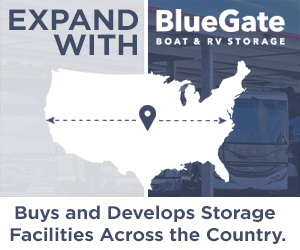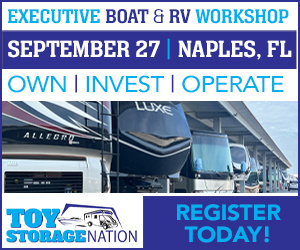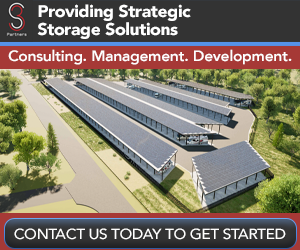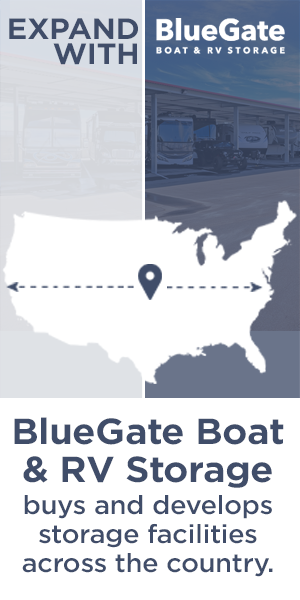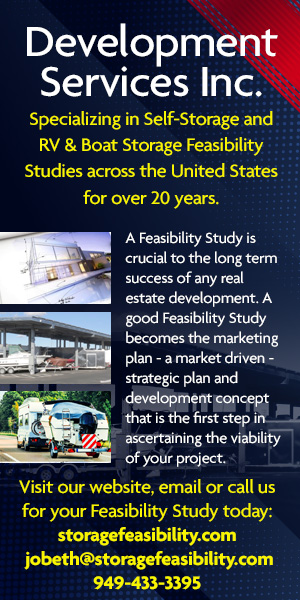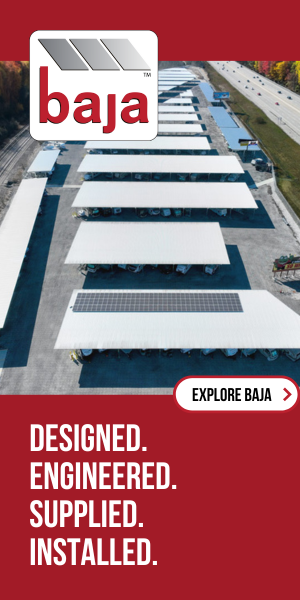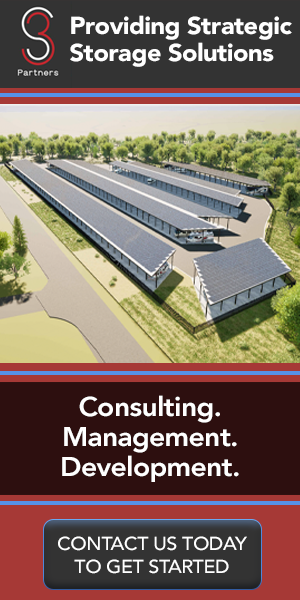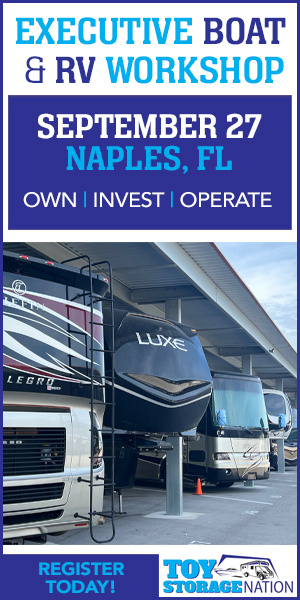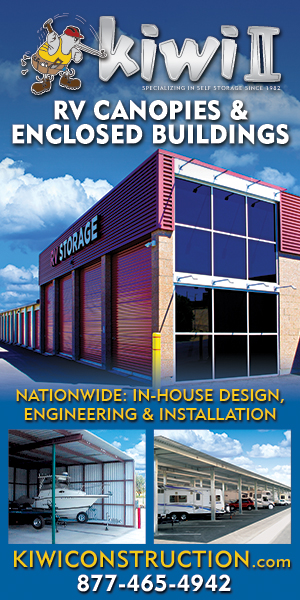By RVStorageVancouver.com
As with any business, the key to success is to begin with the customer’s needs in mind. Throughout America, many people have discovered that owning an RV and boat provides them access to the finest in recreation. Over the last couple of years, RV and boat ownership has soared while facilities to store these high-priced toys haven’t come close to meeting the demand.
Naturally, before you jump head first into developing and operating a toy storage facility, you’ll want to do plenty of research to ensure you’re developing wisely. Below are considerations any storage entrepreneur should consider.
Site Location
Perhaps the most critical step to building a successful RV and boat storage facility is finding the ideal site location. Metro areas like Houston, Dallas, Denver have the most RV and boat storage facilities, but they also have significant demand. Regardless, metros with higher rates of population growth are likely to be good markets to consider.
An ideal location is one that customers can find within a reasonable drive from their home, with convenient access, good visibility, etc. This could be in proximity to residential areas, banks, grocery stores, and/or close to recreational areas.
RV and boat storage facilities require a lot of space to accommodate large vehicles. In my opinion, the minimum lot size to develop an RV storage facility is about 3 acres, but this depends on several factors, one of which is land price. Finding land in the perfect location may be cost prohibitive. This is why many RV and boat storage facilities are developed in industrial areas or in the outskirts of cities.
Building a successful RV and boat storage business can be done in more remote areas than a typical self-storage facility because RV owners are willing to drive farther than self-storage users. However, if the location is less than ideal, other factors such as land price, accessibility, and visibility become more important.
How Many RV Parking Spaces per Acre?
The optimal number for an RV storage facility is about 65 spaces per acre. However, this requires the right conditions, in terms of size and shape of the facility. A 1-acre facility is certainly less space efficient than a 10-acre facility. A rectangular facility is much more efficient than a triangular facility.
In addition, a facility designed for 40-foot RVs will result in less spaces per acre than a facility designed for a mix of RV sizes. Small boats and RVs may be parked in spaces that are only 10 feet wide, while larger RVs need 12-feet wide spaces.
Finally, lower end facilities tend to have more spaces per acre than higher end facilities. Smaller facilities tend to feel crowded as these generally have smaller spaces and smaller drive aisles. higher end facilities tend to feel spacious. These often have spaces up to 14′ wide.
Understand Zoning Restrictions
Cities and municipalities have zoning processes and restrictions that must be understood well in advance of development. Counties generally don’t like RV storage facilities for various reasons. This is understandable as some vehicle storage facilities aren’t necessarily aesthetically pleasant. Additionally, vehicle storage facilities generate little employment and often don’t generate sales taxes.
Before entering into an agreement to purchase land, it is critical for the developer to understand whether the parcel of land being considered allows the construction of a vehicle storage facility by right, or if it will require a conditionally permitted use or even a zoning change.
A permitted use allows for the construction of a vehicle storage facility by right. The city and/or county can’t deny the pertinent permits, provided that all zoning ordinances are met.
Conditional permits on the other hand can be denied and even when successful, they can take several months to obtain. When purchasing land, the lengthy permitting process can be detrimental to closing on the land sale agreement.
When conditional use permits can’t be obtained, zoning changes can be a solution. Zoning changes involve changing land use classifications. This can be very difficult to achieve, as zoning changes typically require public hearings, traffic studies, input from several governmental agencies, etc. For this reason, zoning changes may not be a practical solution unless the developer already owns the land to be developed.
Know the Market
As with any business, knowing the market is imperative. In today’s market, RV storage demand is very strong. However, each market is different. Certainly each market is influenced by land prices, zoning restrictions, market demographics, etc.
One of the best market indicators comes from studying the competition. For this, it’s recommended to map out all the RV storage facilities in the area, visiting each one of them, and collecting data on things like vacancy rates, rental rates, space sizes, facility type, amenities, etc. It’s possible to use aerial images to count spaces, estimate space sizes, measure the square footage of the entire facility, etc.
Other potential market indicators come from studying the area demographics. Is the population of the area growing or is it stagnant? Are new homes and apartment complexes being developed? What is the average income? For gathering this type of information I like to use Sperling Best Places.
Having said all of this, the most crucial piece of information for knowing the market are rental rates and vacancy rates. Rental rates will be key in running a preliminary financial analysis. And vacancy rates can be a quick way to determine whether or not there is sufficient demand. If occupancy in the area is below 85%, then it may be best to look for opportunities in a different market.
Assuming you’ve concluded the local market has potential, you may want to hire a feasibility consultant to perform a more in-depth analysis. This can cost somewhere between $7,000 and $12,000.
Rent Differential Between RV and Boat Storage and Traditional Storage
The correlation between RV storage rent and traditional storage rent is worth mentioning. According to Yardi Matrix, the national average rent for RV/ boat storage is $0.70 per square foot, compared to roughly $1.50 per square foot for traditional self storage.
Metros like Seattle have a large gap between RV/boat and traditional storage. Seattle’s RV/boat storage averages $0.48 per square foot, compared to $1.73 per square foot for traditional storage. In other words, RV storage rents are probably too low in the Seattle market. This may be also true for other large cities in Washington, like Vancouver, Tacoma, the Tri-cities area, etc.
Preliminary Financial Analysis
An investor must be able to evaluate dozens of potential deals. This means performing quick preliminary financial evaluations.
Developing a simple outdoor storage facility that is fully fenced, with asphalt surface, security equipment, etc., can cost around $15 per square foot. Installing steel canopies for covered parking can cost an additional $30$50 per square foot, depending on the type of structure. In general, developers can fit about 65 RV storage spaces per acre. This doesn’t account for setbacks, wetland buffers, storm retention ponds, etc.
In short, a 3-acre open RV storage facility can accommodate about 190 RVs of various sizes. At $15/SF, a 3-acre an outdoor RV storage facility can cost $1,960,000 to develop. Add in the cost of the land and you could be looking at a total cost of about $2,300,000.
Estimating cash flow at an early stage of the business can be a daunting task. To keep things simple, let’s use the example of purchasing a 190-space existing facility for $2,300,000. Assume an average rental rate of $120 per month per space and an occupancy rate of 90%. Let’s also assume this RV storage facility has an expense ratio of 25%. With these numbers, we can conclude that this facility can produce $177,840 of cash flow per year.
Is this amount of cash flow worth your investment? It depends on several things, but most investors want to limit their initial investment amount. This means most investors will be looking for some form of financing.
One of the tools that can be helpful to evaluate cash flow is Cash on Cash (COC). In short, COC represents income (after debt service) as a percent of cash invested. The higher the COC, the better.
The example above assumes a 10% initial investment. Is this possible? Absolutely! Consider seeking an SBA loan that requires you to put down no more than 10% of the total cost to buy the land and develop.
Aerial View of a 2.8-Acre RV Storage Facility
Select The Right Team
To build a successful RV storage business you need to have the right team. Ideally this team is experienced in RV storage development and can help guide you where you lack expertise. Below is a list of field experts considered essential to have on your team.
- Land broker – Finding the ideal piece of land requires working with a commercial land broker that is familiar with the area and can help you find a good deal.
- Lender – There are a few banks that specialize in storage facilities and in SBA loans. In some cases, you can also work with a broker lender to help you find the best lenders.
- Engineer – An engineering firm can help you develop preliminary drawings, propose parking layouts, determine quantities, navigate the permitting process, etc.
- Contractor – A good contractor can provide you with reliable construction estimates at various stages of the design process. A good contractor can also provide a constructability review to capitalize on cost reduction ideas during the design process.
- Storage Management Software Provider – Automating the day to day operations of the facility can be a game changer. There are multiple vendors providing self-storage facility management software that can easily be adapted to RV storage facility management.
Marketing
If you’ve done a good job with site selection, then chances are you have a site with great visibility. Keep in mind a large number of potential customers will see your facility while they drive to work, home, do grocery shopping, or drive to a vacation spot. But, even with an excellent location you’ll want to fill your RV storage facility as quickly as possible. Think of this as a race to becoming cash flow positive.
Capitalize on site selection by placing banners and signs on the fence of your RV storage facility.
creeksideselfstorage.com
Pay for effective local advertisement. This could include sponsoring a local baseball league or a local event.
Finally, but perhaps most importantly, spend significant effort at establishing an online presence. This can involve picking the right name for the facility and selecting a domain name that corresponds to that name. Then build a website and work with a content and SEO expert to help you get traffic to your website and gain online ranking.
Conclusion
The thought of developing a new business can be a bit intimidating. But, remember that RV storage facilities are amazing cash producers and finding a facility to purchase at a reasonable price is becoming increasingly difficult. Still, it is certainly possible to build a successful RV storage business, but always remember to do your research.
RVStorageVancouver.com aims to be an affordable and secure place for customers to store their RVs, boats, and other vehicles.











